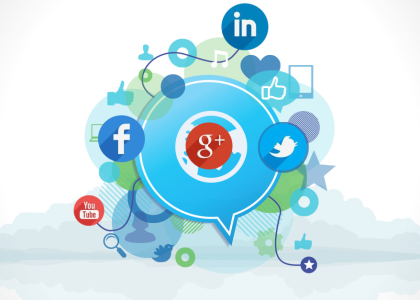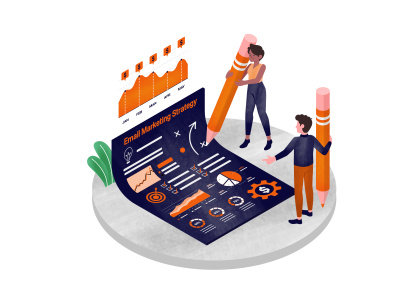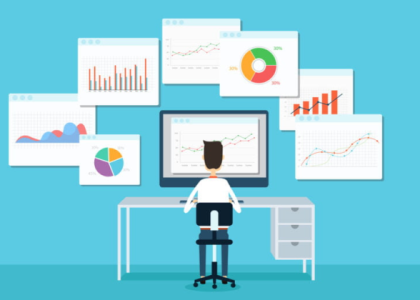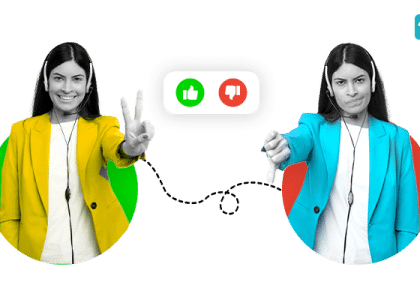
In the rapidly evolving world of B2B marketing, artificial intelligence (AI) is no longer a futuristic concept or an experimental tool—it’s a full-fledged driver of transformation. Over the past few years, AI has matured from automating repetitive tasks into a deeply strategic capability that can anticipate buyer intent, personalize journeys at scale, and optimize every touchpoint along the funnel.
But the real game-changer? We’re only scratching the surface.
The next wave of AI is not just about doing things faster—it’s about doing them smarter, with deeper insights, predictive precision, and human-like engagement. B2B marketers who embrace this shift will gain a clear edge in customer acquisition, retention, and loyalty.
Let’s explore what’s next in the AI revolution for B2B marketing—and how you can get ahead of the curve.
1. Hyper-Personalization at Scale: A New Gold Standard
The days of segmenting customers into static buckets are fading fast. AI is enabling marketers to move from generic messaging to real-time, one-to-one personalization—even across vast and complex buying groups typical in B2B environments.
With machine learning algorithms that analyze behavioral patterns, demographic data, purchase histories, and engagement signals, AI can craft ultra-relevant content journeys.
Examples in action:
- A decision-maker in the manufacturing industry sees case studies specific to their sector and company size.
- A CMO in fintech receives an AI-personalized email based on their interaction with a recent webinar.
- Dynamic landing pages adjust in real-time based on visitor behavior and account-level insights.
This isn’t just a boost in experience—it’s a revenue multiplier. According to McKinsey, personalization can deliver five to eight times the ROI on marketing spend and lift sales by 10% or more.
2. Predictive and Prescriptive Analytics: Know What’s Next
Predictive analytics has already helped B2B marketers identify which leads are most likely to convert. The next wave brings in prescriptive analytics, where AI doesn’t just tell you what’s likely to happen—it tells you what to do about it.
Use cases include:
- AI suggesting when a lead should receive a follow-up based on historical data.
- Recommending a content asset likely to drive a conversion for a specific buyer persona.
- Flagging a decline in engagement and proposing a re-engagement campaign before the lead goes cold.
These tools are especially powerful in account-based marketing (ABM), where insights into buyer intent, firmographics, and engagement can trigger customized multi-touch campaigns automatically.
Key takeaway: Prescriptive AI bridges the gap between data and action, turning insights into outcomes.
3. Generative AI in Content Strategy: From Creation to Conversion
Content remains the fuel for B2B marketing engines—but keeping up with demand is tough. Generative AI is stepping in as a strategic co-pilot, accelerating content creation without compromising quality.
Here’s how B2B teams are using AI to revolutionize content:
- Drafting blog posts, whitepapers, and email sequences based on brand voice guidelines.
- Summarizing webinars or reports into social media posts.
- Generating unique product descriptions tailored to industry verticals.
- Enhancing SEO by suggesting high-performing keywords, meta descriptions, and topic clusters.
But it goes beyond writing. AI tools can now repurpose and atomize content into formats that serve various channels—turning one case study into a newsletter, LinkedIn post, and sales deck snippet in minutes.
Pro Tip: Use tools like Jasper, Copy.ai, or ChatGPT with marketing-specific prompts. Combine them with human editing for compelling, conversion-ready content.

4. Conversational AI: Elevating Buyer Interactions
Chatbots were once seen as simplistic helpers. Today, conversational AI is a core part of lead qualification, sales enablement, and customer support—especially in the B2B space where decision-making cycles are longer and more complex.
Modern AI chat experiences now offer:
- Multi-turn conversations that simulate human dialogue.
- Integration with CRM data for personalized responses.
- Instant access to pricing, product specs, case studies, and more.
These bots can even book meetings, score leads, and route conversations to the appropriate sales rep in real-time, shortening the sales cycle significantly.
And with tools like Drift, Intercom, or HubSpot’s AI chat assistants, B2B brands are building smart, always-on sales assistants that never sleep.
5. AI-Powered Video Marketing: Visual Content that Converts
Video is one of the most engaging content formats—and AI is making it more accessible and scalable than ever before.
Innovations to watch:
- AI-generated videos from text scripts (e.g., Synthesia).
- Personalized video greetings based on the recipient’s name, role, or company.
- Smart analytics that track viewer behavior and adjust video content dynamically.
Instead of spending days and thousands of dollars creating one video, B2B marketers can now generate dozens of personalized, high-quality videos in hours—perfect for sales outreach, onboarding, or product education.
Don’t sleep on video. AI is helping B2B brands become storytellers at scale.
6. Autonomous Account-Based Marketing: Next-Level ABM
Account-Based Marketing (ABM) is one of the most effective strategies in B2B, but it can be labor-intensive. The future is autonomous ABM, powered by AI that identifies key accounts, maps decision-makers, and orchestrates personalized engagement across platforms—automatically.
Here’s what AI can now do for ABM:
- Detect buying signals across the web (intent data) and alert sales teams.
- Recommend the best content to serve based on the stage of the account.
- Automate ad targeting and retargeting across LinkedIn, programmatic, and email.
With AI, ABM becomes a dynamic, living strategy that evolves as your accounts do—ensuring you stay top of mind and ahead of competitors.
7. Voice of Customer (VoC) Insights: AI-Powered Listening
AI tools are increasingly capable of analyzing voice-of-customer data at scale—turning calls, emails, surveys, and support tickets into actionable intelligence.
Benefits of VoC AI:
- Identify customer pain points or unmet needs early.
- Gauge sentiment and satisfaction levels across accounts.
- Inform product development or service adjustments.
Imagine an AI platform that reads thousands of customer reviews or transcripts and surfaces themes like “too complex onboarding” or “love the reporting tools”—insights that can shape both marketing and business strategy.

8. Intelligent Lead Nurturing: AI as a Relationship Builder
Nurturing leads manually is tedious—and prone to error. AI enables automated, intelligent nurturing workflows that adapt based on a lead’s engagement and stage in the buyer’s journey.
You can now:
- Trigger custom nurture sequences based on behavior (e.g., visiting pricing page).
- Score leads dynamically and escalate high-intent accounts to sales automatically.
- Retarget disengaged leads with new offers or value-based messaging.
This creates a smoother journey and reduces drop-offs, especially in long B2B sales cycles.
9. Ethics, Transparency, and Human Oversight
With great power comes great responsibility. As AI becomes more embedded in B2B marketing, concerns around data privacy, bias, and ethical use are growing.
What leading brands are doing:
- Using AI tools with transparent decision-making models.
- Setting clear guidelines for ethical content creation and data handling.
- Ensuring human review for high-impact messaging and decision-making.
Buyers today want to know not just what you’re using, but how you’re using it. Responsible AI builds trust—and that’s a B2B brand’s most valuable asset.
10. Cross-Team Collaboration: AI Breaking Silos
AI isn’t just a marketing tool—it’s a bridge across departments. Sales, marketing, product, and customer success can now share insights and operate with aligned intelligence.
For example:
- Marketing uses sales data to inform campaign targeting.
- Sales uses marketing insights to tailor outreach.
- Customer success flags upsell opportunities based on usage data.
AI ensures that everyone is rowing in the same direction—with real-time data, shared goals, and synchronized strategies.
Final Thoughts: The B2B Marketing of Tomorrow
The next wave of AI in B2B marketing is not about replacing humans—it’s about enhancing our creativity, decision-making, and ability to connect with buyers on a deeper level.
It’s about creating smarter, faster, and more empathetic marketing systems that:
- Predict what your audience wants.
- Deliver the right message at the perfect time.
- Adapt to changing signals in real-time.
🚀 The question is no longer “Should we use AI?” but “How far can we go with it?”
Quick Checklist: How to Ride the Next Wave of AI
✅ Audit your current martech stack for AI capabilities
✅ Start with low-risk, high-impact AI experiments (e.g., email optimization)
✅ Combine AI insights with human creativity and oversight
✅ Stay informed on ethical standards and compliance regulations
✅ Collaborate across teams for maximum ROI
✅ Measure, iterate, and optimize continuously
Ready to future-proof your B2B marketing with AI?
Start small. Learn fast. Scale smart.
If you’d like help building a B2B AI marketing strategy—or need help choosing the right tools for your stack—just reach out. The future is waiting, and it’s intelligent.




